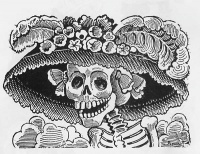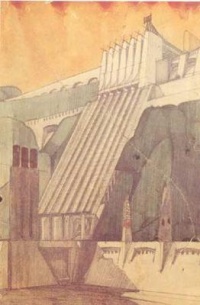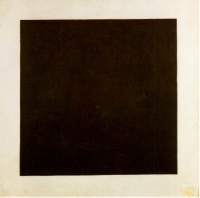1910s
From The Art and Popular Culture Encyclopedia
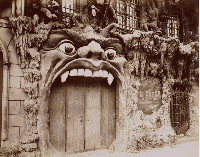
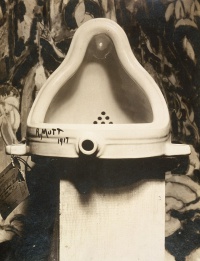
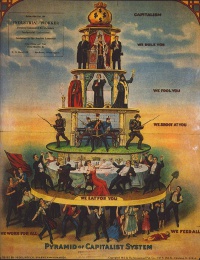
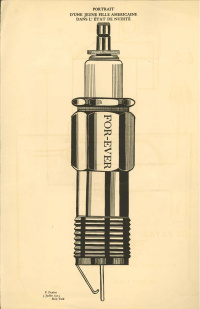
|
Related e |
|
Featured: |
| << 1900s | 1920s >> | |
|---|---|---|
The 1910s (usually pronounced "nineteen-tens") was a decade that began on January 1, 1910, and ended on December 31, 1919. The conservative lifestyles during the first half of the decade, as well as the legacy of military alliances, was forever changed by the assassination in 1914, of Archduke Franz Ferdinand. The murder triggered World War I, a conflict that dragged on until late 1918.
The decade also saw the origin of the Dada movement in Switzerland.
Contents |
Milestones
Titanic sinks - 1917 October Revolution, Russia - WWI (1914-18) - radio programming becomes popular - silent film - jazz (origins) - ragtime - Bauhaus founded - Dada - Futurism - USA/Europe: Alcohol Prohibition
Timeline
- 1910 First cases of nasal damage from cocaine snorting are written of in medical literature
- 1911 Mona Lisa Stolen
- 1912 "Handbuch der gesamten Sexualwissenschaft in Einzeldarstellungen" (Handbook of Sexology in its Entirety Presented in Separate Studies) - Iwan Bloch
- 1913 Bicycle Wheel (1913) - Marcel Duchamp
- 1914 Start of WWI
- 1915 A Fool There Was (1915) - Frank Powell
- 1916 The First Dada Manifesto
- 1917 Fountain (1917) - Marcel Duchamp
- 1918 End of WWI, start of Weimar Republic
- 1919 Bauhaus institute founded
Art and culture
- Radio programming becomes popular
- Flying Squadron promotes temperance movement in the U.S.
- The first U.S. feature film, Oliver Twist, was released in 1912
- The first gangster movie, D. W. Griffith's The Musketeers of Pig Alley was released in 1912
- Hollywood replaces the East Coast as the center of the movie industry
- Charlie Chaplin débuts his trademark mustached, baggy-pants 'Little Tramp' character in Kid Auto Races At Venice in 1914
- The first African-American owned studio, The Lincoln Motion Picture Company, was founded in 1917
- The four Warner brothers, Jack, Albert, Harry and Samuel, opened their first West Coast studio in 1918
- First crossword puzzle
- Jazz music begins to become popular
Film
- Aufklaerungsfilme
- Quo Vadis? by Enrico Guazzoni
- Fantômas (1913 - 1914) film serial
- Cabiria (1914) by Giovanni Pastrone
- Les Vampires (1915) - Louis Feuillade
- A Fool There Was (1915) - Frank Powell
Visual art
- end of Art Nouveau and beginning of Art Deco
- September Morn (1912) by Paul Emile Chabas
- Fountain (1917) by Duchamp
- Blue Horse (1911) by Franz Marc
- Me and my Village (1911) by Marc Chagall
- Armory show (1913)
- Piazza d'Italia (1913) by Giorgio de Chirico
- Centrale elettrica (1914) by Antonio Sant'Elia
- In 1914, suffragette Mary Richardson damages Velasquez painting Rokeby Venus
- Red and Blue Chair (1918) by Gerrit Rietveld
- Beat the white with the Red wedge (1919) by El Lissitzky
- Alma Mahler (1919) - Hermine Moos
Music
- "The Art of Noises" (1913) by Luigi Russolo:
- "The Rite of Spring" (1913) - Igor Stravinsky
Architecture
- Palais Stoclet (1905 to 1911) - Josef Hoffmann
Literature
Fiction
- Phantom of the opera (1910) by Gaston Leroux
- Thomas Mann publishes Death in Venice (1912)
- Pygmalion(1913) by George Bernard Shaw is published
- D. H. Lawrence publishes Sons and Lovers (1913)
- Tarzan of the Apes (1914) by Edgar Rice Burroughs is published as book
- "The Metamorphosis" (1915) - Franz Kafka
- Of Human Bondage (1915) by Somerset Maugham is published
- Zane Grey's Wild Fire is published
- Dubliners and A Portrait of the Artist as a Young Man (1916) by James Joyce are published
Non fiction
- Promenades of an Impressionist (1910) by James Huneker
- Les livres de l'Enfer (1913) by Guillaume Apollinaire
- The Art of the Moving Picture (1915) - Vachel Lindsay
- The Photoplay (1916) by Hugo Münsterberg
- A Child Is Being Beaten (1919) by Sigmund Freud
Poetry
- Hugo Ball performs Karawane (1916)
- "Salut monde" by Guillaume Apollinaire
Others
- The ocean liner RMS Titanic strikes an iceberg in the North Atlantic in 1912, and sinks on its maiden voyage.
- From 1918 through 1920 the Spanish flu kills 20 to 100 million people worldwide.
Politics
The 1910s represent the culmination of European militarism which had its beginnings during the second half of the nineteenth Century. The conservative lifestyles during the first half of the decade, as well as the legacy of military alliances, would forever be changed by the assassination of Archduke Franz Ferdinand of Austria, heir to the Austrian throne, on 28 June 1914. The murder would trigger a chain of events in which, within 30 days, war would break out in Europe, as well as other regions of the world. The long, wide, and protracted conflict would end in November 1918 with the controversial Treaty of Versailles. World War I —known then as the Great War— held the reputation of being the widest and most expensive conflict in history (at the time), and would leave a lasting legacy during the subsequent decades. The war would also be remembered for contributing to the collapse of aging empires and monarchies. The Habsburgs as well as Wilhelm II of Germany went into exile after 1918, while czar Nicholas II of Russia and his family would be ruthlessly executed by Russian revolutionaries.
The decade was also a period of revolution in a number of countries. Mexico spear-headed the trend in November 1910, which led to the ouster of dictator Porfirio Diaz, leading to a civil war that dragged on until circa 1919, not long after a new Mexican constitution was signed. Russia also had a similar fate, since the Great War led to collapse in morale as well as to economic chaos. This atmosphere encouraged the establishment of Bolshevism, which would be later renamed as Communism.
Fashion
During the early years of the 1910s the fashionable silhouette became much more lithe, fluid and soft than in the 20th century. When the Ballets Russes performed Scheherazade in Paris in 1910, a craze for Orientalism ensued. The couturier Paul Poiret was one of the first designers to translate this vogue into the fashion world. Poiret's clients were at once transformed into harem girls in flowing pantaloons, turbans, and vivid colors and geishas in exotic kimono. Paul Poiret also devised the first outfit which women could put on without the help of a maid. The Art Deco movement began to emerge at this time and its influence was evident in the designs of many couturiers of the time. Simple felt hats, turbans, and clouds of tulle replaced the styles of headgear popular in the 20th century. It is also notable that the first real fashion shows were organized during this period in time, by the first female couturier, Jeanne Paquin, who was also the first Parisian couturier to open foreign branches in London, Buenos Aires, and Madrid.
Two of the most influential fashion designers of the time were Jacques Doucet and Mariano Fortuny. The French designer Jacques Doucet excelled in superimposing pastel colors and his elaborate gossamery dresses suggested the Impressionist shimmers of reflected light. His distinguished customers never lost a taste for his fluid lines and flimsy, diaphanous materials. While obeying imperatives that left little to the imagination of the couturier, Doucet was nonetheless a designer of immense taste and discrimination, a role many have tried since, but rarely with Doucet's level of success.
The Venice-based designer Mariano Fortuny y Madrazo was a curious figure, with very few parallels in any age. For his dress designs he conceived a special pleating process and new dyeing techniques. He gave the name Delphos to his long clinging sheath dresses that undulated with color. Each garment was made of a single piece of the finest silk, its unique color acquired by repeated immersions in dyes whose shades were suggestive of moonlight or of the watery reflections of the Venetian lagoon. Breton straw, Mexican cochineal, and indigo from the Far East were among the ingredients that Fortuny used. Among his many devotees were Eleanora Duse, Isadora Duncan, Cleo de Merode, the Marchesa Casati, Emilienne d'Alençon, and Liane de Pougy.
Changes in dress during World War I were dictated more by necessity than fashion. As more and more women were forced to work, they demanded clothes that were better suited to their new activities. Social events had to be postponed in favor of more pressing engagements and the need to mourn the increasing numbers of dead, visits to the wounded, and the general gravity of the time meant that darker colors became the norm. A new monochrome look emerged that was unfamiliar to young women in comfortable circumstances. By 1915 fashionable skirts had risen above the ankle and then later to mid-calf.
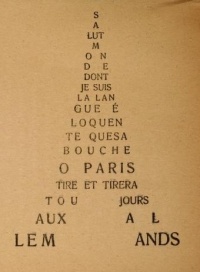
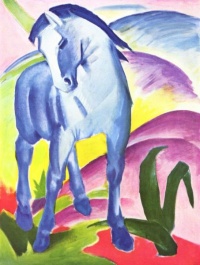
_-_Odilon_Redon.jpg)
